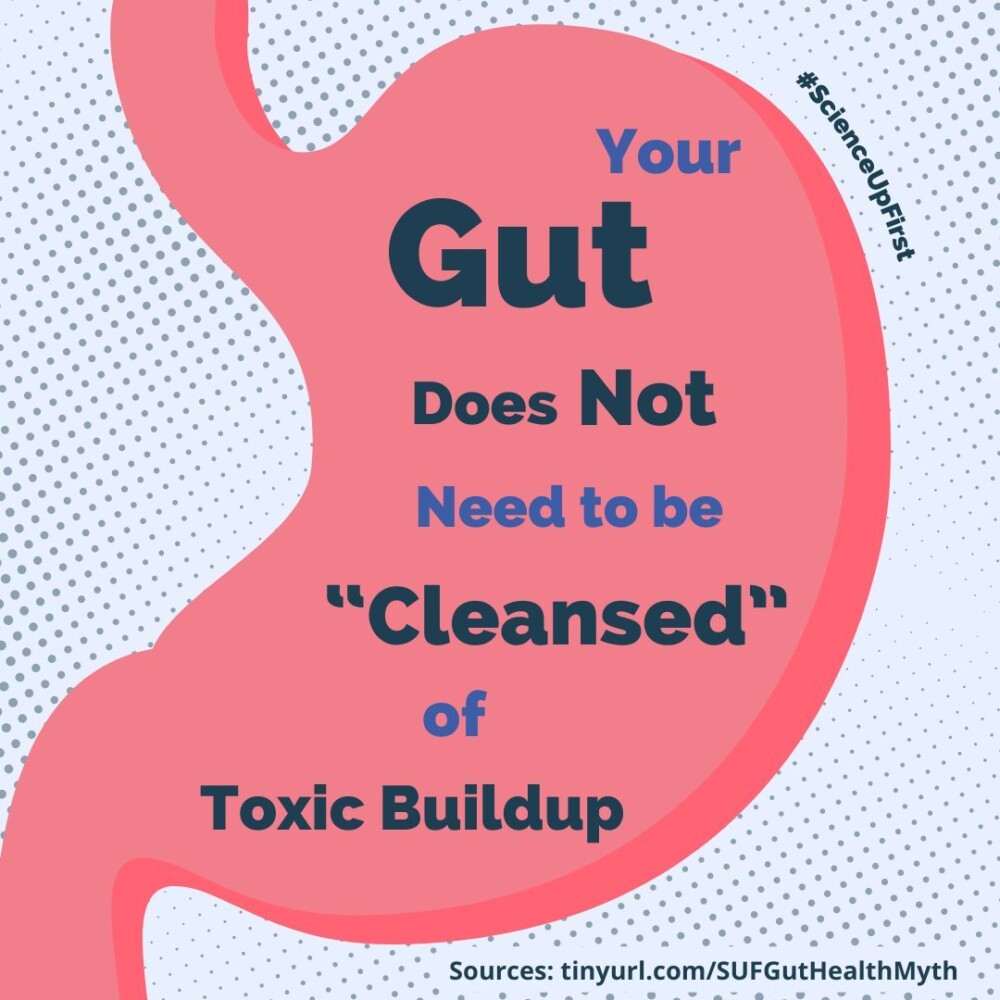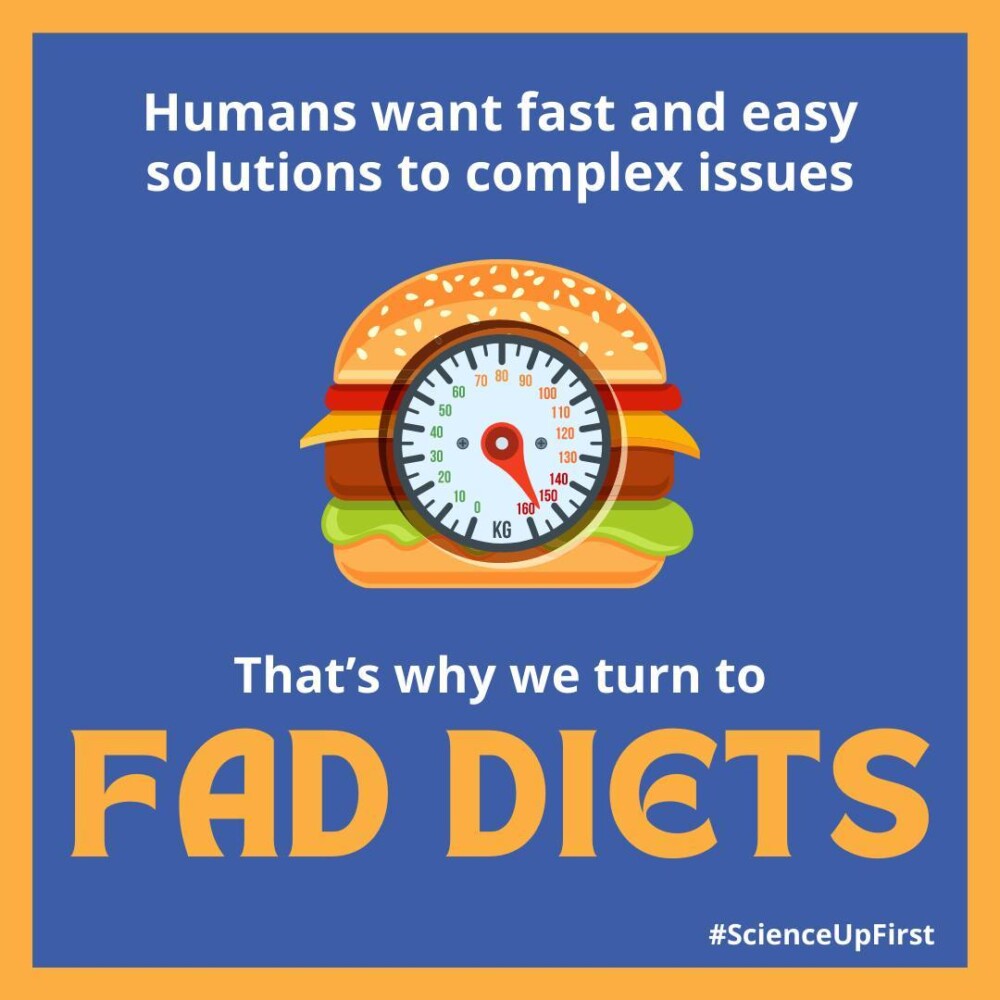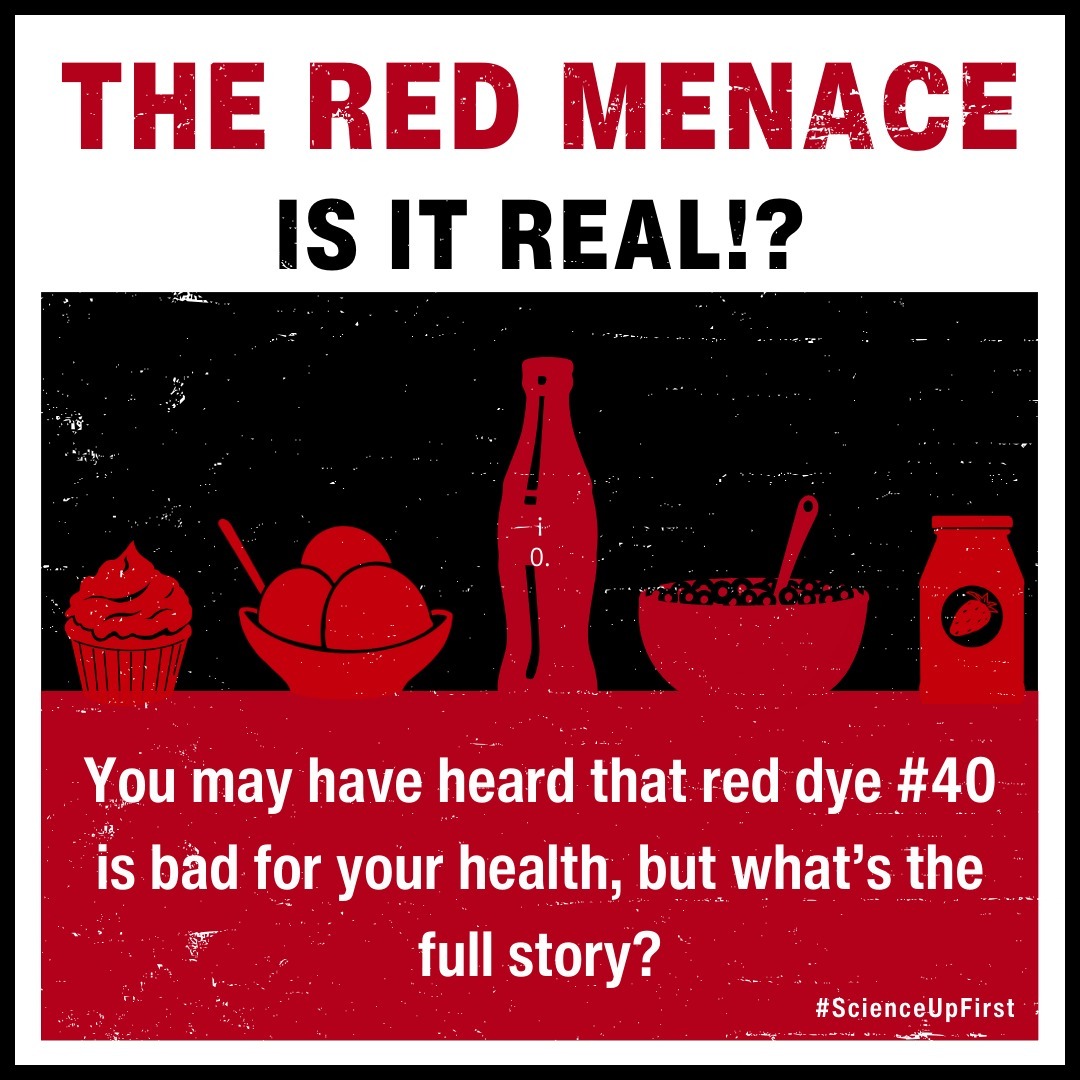
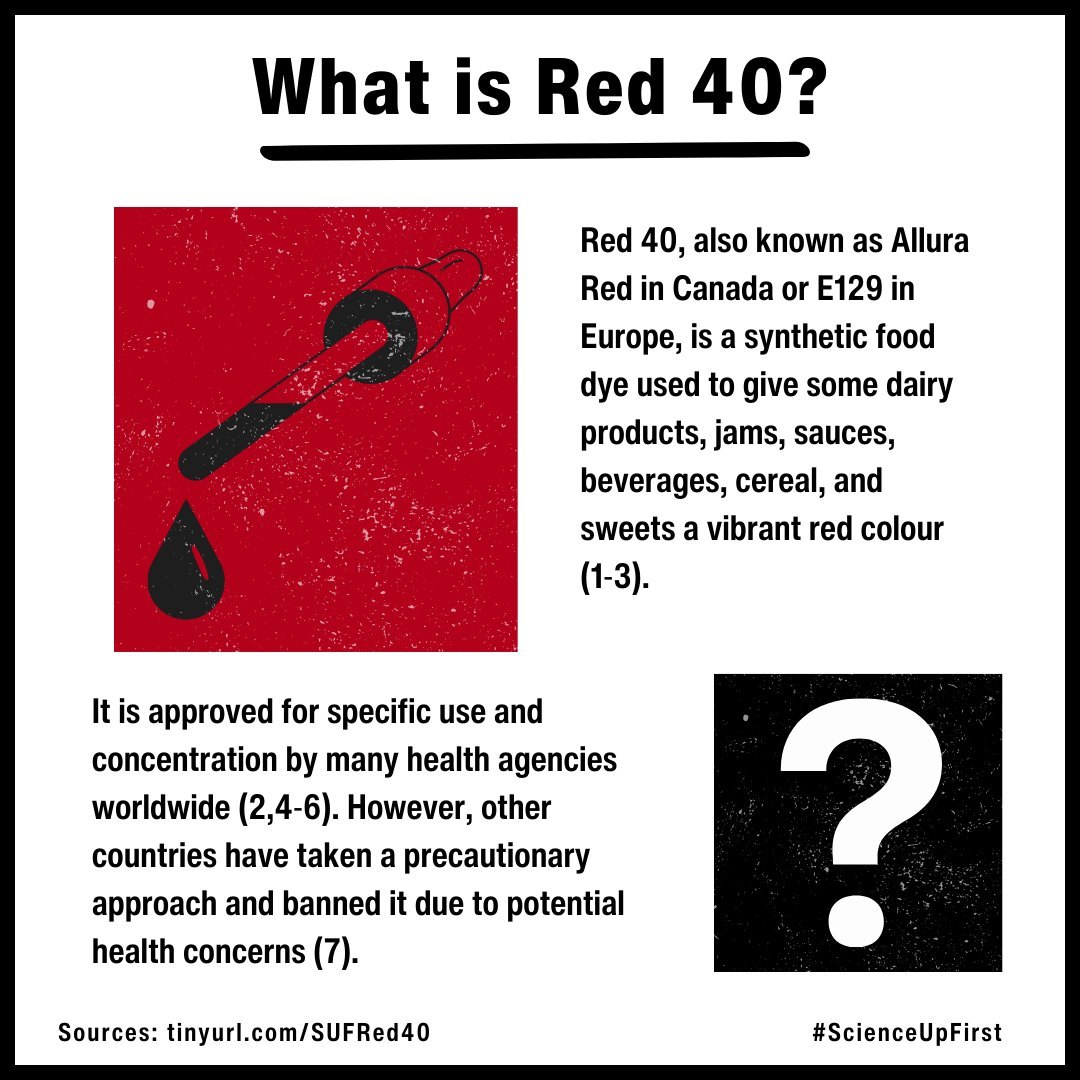

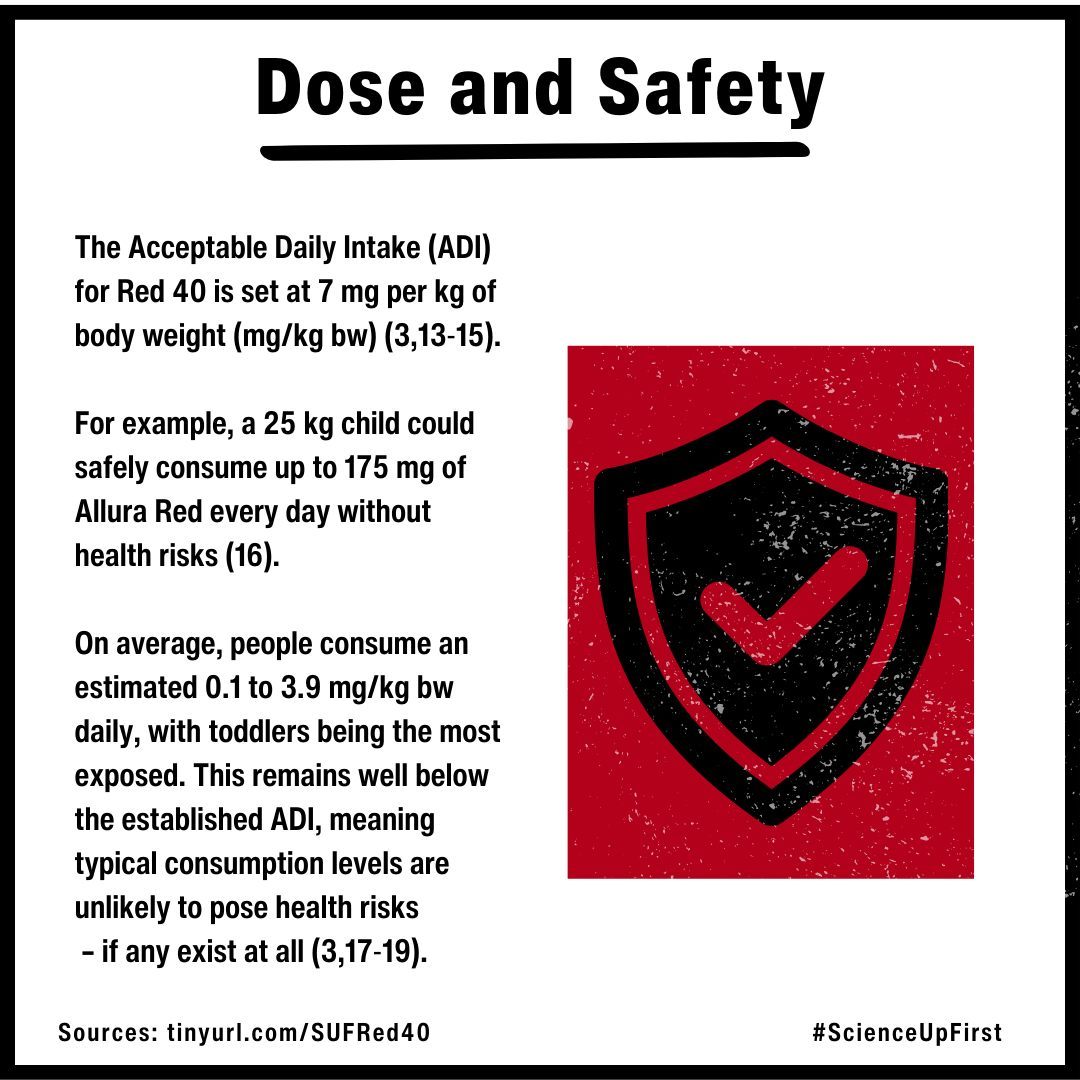
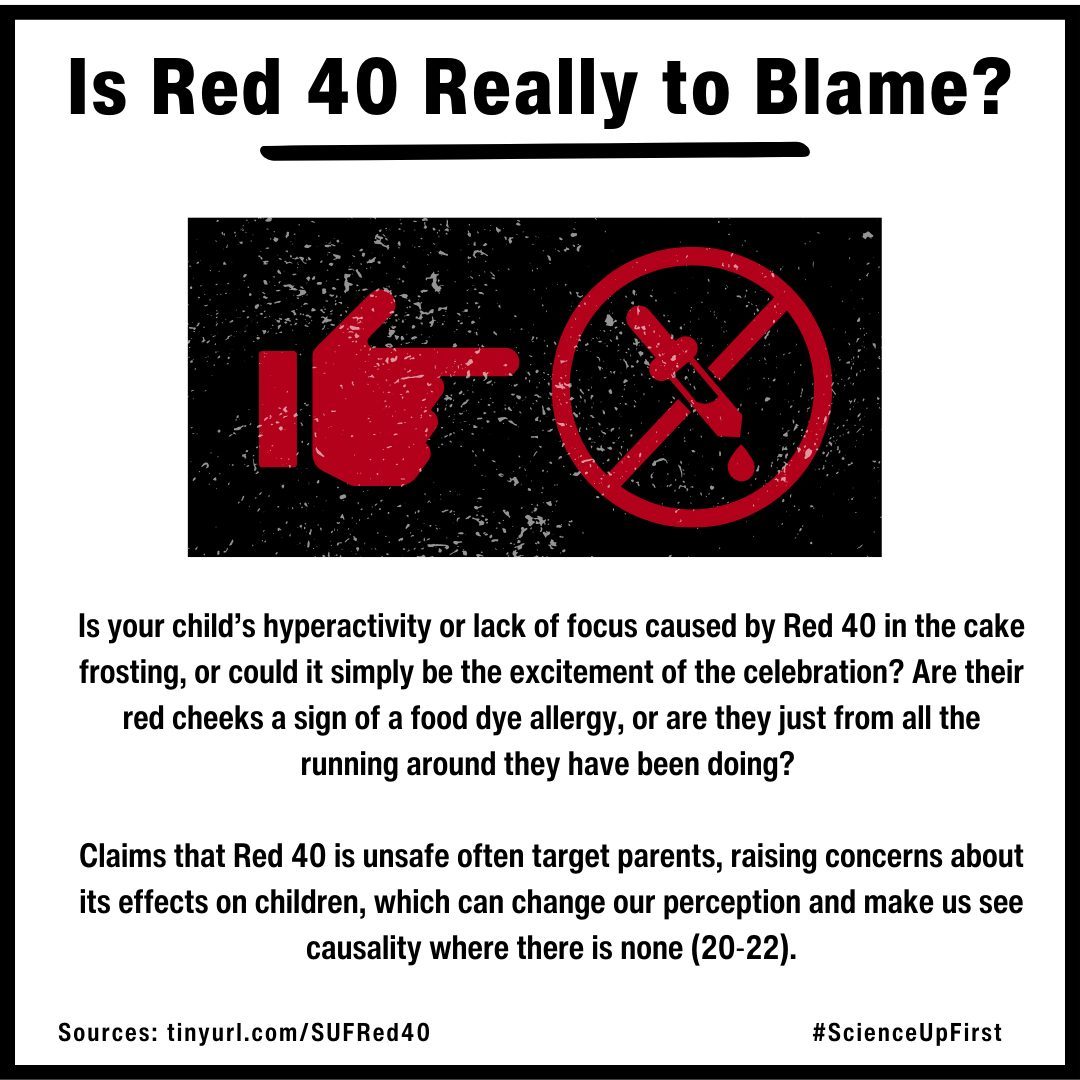
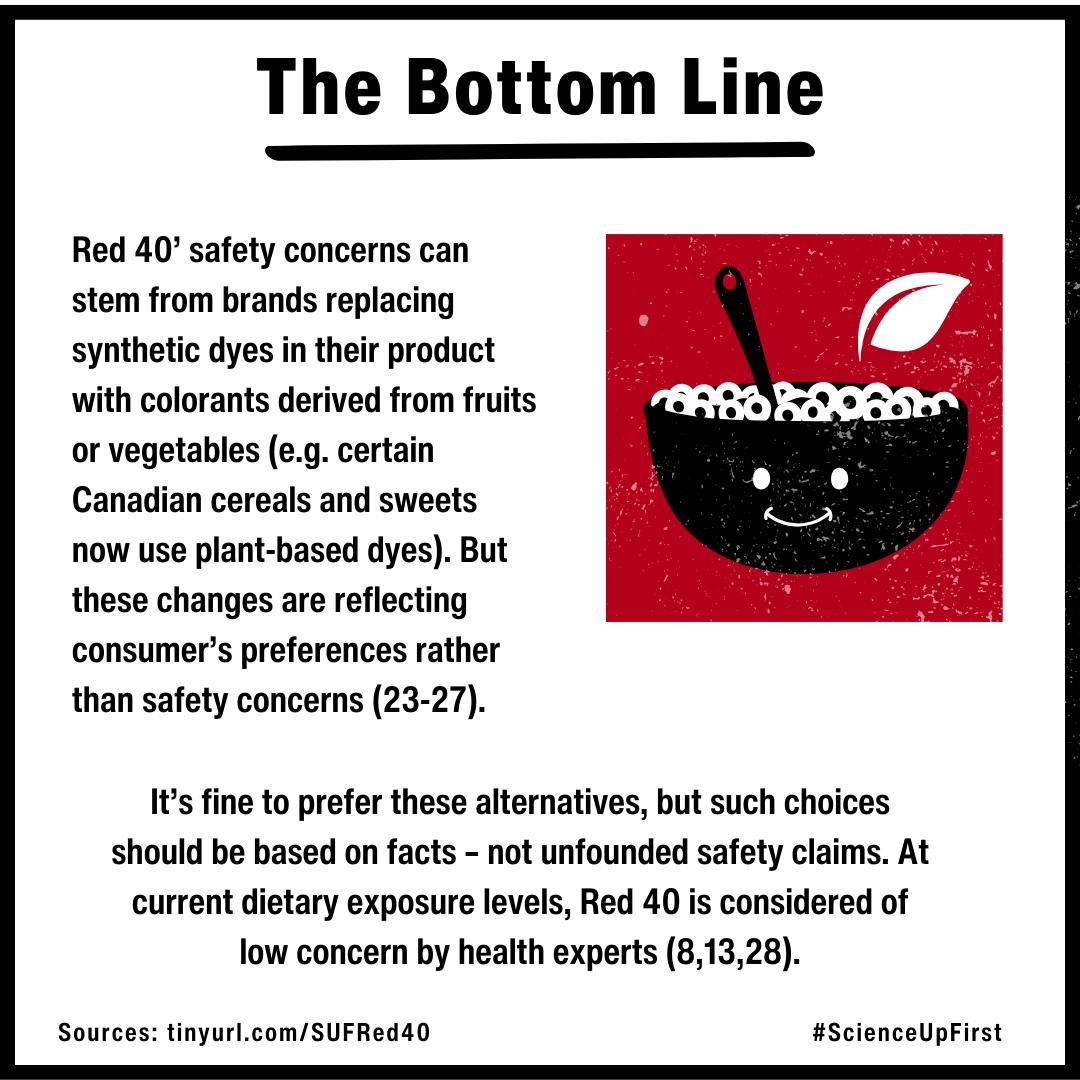
Food dyes are used to make food more appealing, replace natural color lost during processing, or to help us recognize products at a glance (i.e. drugs) (11).
Red 40, or Allura Red, is a synthetic dye used to give foods like candies, drinks, and cereals a vibrant red hue (3). While some claim it causes allergies, hyperactivity in kids, or even cancer, the evidence tells a different story. Allergic reactions are very rare and mild, there’s limited evidence linking it to hyperactivity in certain children with ADHD, and no conclusive proof it causes cancer in humans (3,4,8-13).
The truth? Red 40 is poorly absorbed and mostly excreted in the feces (3,11). It’s regulated for safety, with most people consuming well below the acceptable daily intake (3).
Don’t forget that foods with high concentration of Red 40 are often ultra-processed and high in sugar, salt, and fat, which pose their own health risks in excess (29,30). So, is it the dye, the other ingredients, or a mix of both? 🤷
Remember, food safety is about balance and informed choices, not fear.
Thank you to the amazing @myriam.beaudry.dtp for the collaboration and support in writing this post!
- Specific Food Colours Permitted in Canada and their Corresponding European Numbers and/or United States Names | Government of Canada
- List of Permitted Colouring Agents (Lists of Permitted Food Additives) | Government of Canada | December 2024
- Evaluation of certain food additives – WHO Technical Report Series | FAO/WHO Expert Committee on Food Additive
- Color Additives Questions and Answers for Consumers | U.S. Food & Drug Administration (FDA) | Updated December 2023
- Regulation on food additives | the European Parliament and of the Council | 16 December 2008
- Survey of Added Colours in Foods Available in Australia – Study of Concentrations in Food Including Dietary Exposure Assessment and Risk Characterisation | Food Standards Australia New Zealand (FSANZ) | 2006
- Recent advances in electrochemical sensors based on nanomaterials for detection of red dyes in food products: A review | Food Chemistry on ScienceDirect | March 2024
- Red Dye 40: Safety, Side Effects, and Food List | Healthline | August 2024
- Common food colorants and allergic reactions in children: Myth or reality? | Food Chemistry on ScienceDirect | September 2017
- Food azo-colours for inclusion in the list of food ingredients for labelling purposes | European Food Safety Authority | 2010
- Health safety issues of synthetic food colorants | Regulatory Toxicology and Pharmacology on ScienceDirect | December 2015
- Food colors: Existing and emerging food safety concerns | Critical Reviews in Food Science and Nutrition | 2017
- Re-evaluation of Allura Red AC (E 129) as a food additive | European Food Safety Authority (EFSA) | 2009
- Allura Red AC | Joint FAO/WHO Expert Committee on Food Additives (JECFA)
- Allura Red AC | PubChem – National Library of Medicine
- ADI | European Food Safety Authority (EFSA)
- Refined exposure assessment for Allura Red AC (E 129) | European Food Safety Authority (EFSA) | 2015
- Estimated daily intake and safety of FD&C food-colour additives in the US population | Food Additive & Contaminants | 2017
- Exposure estimate for FD&C colour additives for the US population | Food Additive & Contaminants | 2016
- Does sugar make kids hyper? That’s largely a myth | CNN | 2019
- The effect of sugar on behavior or cognition in children. A meta-analysis | JAMA Network | 1995
- Effects of sugar ingestion expectancies on mother-child interactions | Journal of Abnormal Child Psychology on PubMed | 1994
- Protesters demand Kellogg remove artificial colors from Froot Loops and other cereals | The Globe and Mail | 2024
- Kellogg’s® Froot Loops® Breakfast Cereal
- Froot Loops® Cereal
- SMARTIES candy coated milk chocolate 45 g
- Smarties chocolate brand | Nestlé Global
- Safer Chemical Ingredients List | United States Environmental Protection Agency (US EPA)
- Flavour, emulsifiers and colour are the most frequent markers to detect food ultra-processing in a UK food market analysis | Public Health Nutrition | 2023
- Limit highly processed foods – Canada’s Food Guide | Government of Canada
Share our original Tweet!
Red 40 is a food colouring used to give a bright red hue to foods. You may have heard claims about its potential impact on health.
— ScienceUpFirst | LaScienced'Abord (@ScienceUpFirst) January 16, 2025
We get into the finer details here 👉 https://t.co/ypYFG8Auu3#ScienceUpFirst pic.twitter.com/EdpnGzMmSO
View our original Instagram Post!

